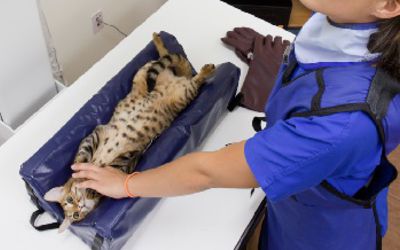
Veterinary radiography has progressed tremendously over the years. Modern machinery, combined with state-of-the-art techniques, ensures that our furry pals receive the best care possible. One central advancement in this realm is the use of vet x-ray positioning aids. This guide delves deep into the world of x-ray positioning aids, offering you a exhaustive overview.
Understanding Vet X-ray Positioning Aids
Before diving into the nitty-gritty, let's first grasp the basic concept. In short, x-ray positioning aids help veterinary experts attain the most accurate images while ensuring minuscule discomfort for the animal. They play a critical role in holding pets in the appropriate position, reducing movement, and ensuring uniform, high-quality results.
Why are X-ray Positioning Aids Crucial in Veterinary Practice?
Safety for Both Animal and Technician: Lessening animal movement is crucial during x-ray processes. This not only makes sure clear images but also minimises the risk of radiation exposure for both the animal and the technician.
Consistent Image Quality: Steadiness is key when it comes to x-rays. Vet x-ray positioning aids help in achieving that by making sure animals are held in the right posture for clear images.
Reduction in Retakes: If a pet stirs during the x-ray process, the chances are high that the images might surface unclear. Positioning aids markedly reduce such instances, leading to fewer retakes.
Popular Types of Vet X-ray Positioning Aids
Foam Positioners: These featherweight and sturdy positioners are excellent for supporting the animal's body parts during radiography. They appear in various shapes and sizes tailored to fit different animals and body parts.
Sandbags: They're superb for stabilising and positioning. Their weight aids hinder movement during the x-ray process.
Tape and Straps: These can be applied to fasten limbs in place. They're tender on the skin and can be adjusted according to the pet's comfort.
Immobilisation Devices: For pets that are exceptionally restless, immobilisation devices can give a safe way to keep them still during the x-ray procedure without creating any discomfort.
Selecting the Right X-ray Positioning Aids for Your Veterinary Clinic
With the variety of aids on hand, picking the right one might appear daunting. However, consider the following factors:
Type of Animals Treated: A clinic mainly handling with small pets might have different requirements than one handling with larger animals.
Frequency of Use: Resilient positioning aids are a requirement for busy clinics.
Budget: While it's crucial not to sacrifice on quality, vet clinics also need to ascertain they're making cost-effective decisions.
Tips for Using Vet X-ray Positioning Aids Efficiently
Training is Imperative: Ensure that all your staff are adequately trained in using the aids. This will guarantee the safety and comfort of the animals while achieving the best possible x-ray images.
Regular Maintenance: Like all equipment, vet x-ray positioning aids also degrade with time. Consistently check for wear and tear and swap them when required.
Prioritise Comfort: While obtaining the ideal image is crucial, it's just as essential to ensure the animal's comfort. Always make certain that any restraints or positioners used are not leading to any anguish to the animal.
Vet x-ray positioning aids have revolutionised the field of veterinary radiography. They have not only ensured the creation of clear, high-quality images but have also had a considerable role in elevating the safety and comfort of the pets undergoing the process. As veterinary experts, it's our duty to make sure we're armed with the best tools and knowledge to give our furry customers the best care imaginable.
If you're looking to upgrade your veterinary clinic with the newest x-ray positioning aids or need more information about them, visit xray4vets. Plunge into a world of advanced veterinary tools and enhance the care you provide to your cherished animal patients.